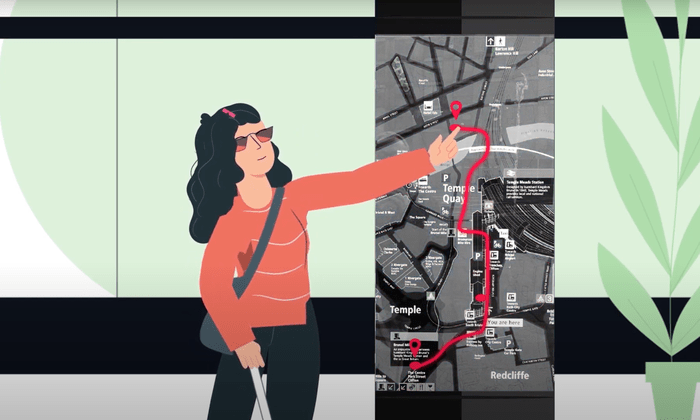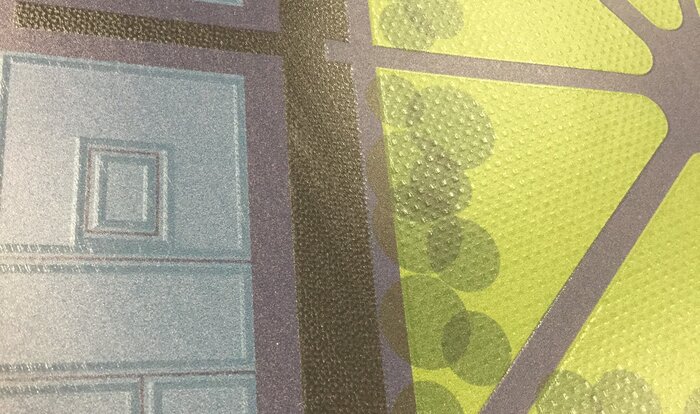Research
Museums and art galleries are important spaces that offer us learning opportunities, social interaction, and a chance to explore beyond the confines of home. For people with visual impairments, most of whom have some useful sight (low vision), these spaces can be challenging. Common ways to help people with visual impairments engage with art include audio/verbal descriptions and occasionally options to touch a replica or original artwork. Whilst these non-visual strategies are helpful, we wanted to understand more about the visual challenges in museums. As such, we ran three focus groups with people with visual impairments, which highlighted difficulties in perceiving fine details caused by issues with size, distance, colour, contrast, and lighting. While non-visual interpretations, like audio descriptions, provide context and visual clues, people with low vision still build mental images of the art they cannot fully see and desire to use their residual vision. More information about these focus groups can be found on the summary page and in the full academic paper.
To address the problems above, we developed software for an Augmented Reality (AR) headset that offers hands-free, real-time visual enhancements. This software allows users to customise enhancements in contrast, colour, magnification, and shape outlining, tailored to their needs.

We are currently testing these visualisations at the Bristol Museum and Art Gallery, gathering participant feedback to refine and improve the software further. Early indications are promising, with participants stating that the visualisations are helpful to see more detail and colours than without the visualisations, and that they would want to use them again. However, we need more participants with varied eyesight to understand more about how differences in eyesight affect the perceived benefits of these visualisations.
This work is part of my PhD, which is supervised by Dr Nervo Verdezoto Dias, Professor Yukun Lai and Professor Tom Margrain.
Prior to my current work, above, my research at University of the West of England investigated how low-cost hardware could be used as an audio headset for people with low vision. Museum curators could write a description, and the software would automatically read these descriptions through the headset when triggered with a contactless tag. I also supported research into tactile and digital wayfinding for people with low vision. This research was in collaboration with Dr Benedict Gaster, Professor Carinna Parraman, and Fabio D'Agnano.
Publications
2024
![Lots of small strips of paper, with a coloured square sticky note above each group of strips.]{Four sticky notes are used as theme headings as sub-headings for groups of codes printed on small strips of paper. The theme headings are 'Museums have rules to follow' (on a blue note) and 'Infrastructure' (on an orange note), which contains two subheadings of 'Lighting must be just right' and 'placement must be just right' (both are on yellow notes). Codes under 'Museums have rules to follow' are: needs help from person to understand museum permissions; sometimes allowed to touch but inconsistent; touching allowed; no photography rules; not allowed to get close to text description; societial pressures prevent getting close to art; unsure if touching is allowed or not; not allowed to get close to art; touching only when supervised. The codes under 'Lighting must be just right' are: lots of lighting needed; lighting is inconsistent in museum spaces; reflections prevent photos; lighting is too much for cameras to handle; lighting is too poor for camera to pick up; lighting doesn't matter; need good lighting to read the description; time to adjust to lighting; reflections on glass covers make art hard to see. Finally, the codes under 'placement must be just right' are: codes to trigger accessibility tools are small or inconsistently placed (Note that the 'or' is crossed through in this picture); art is too high on the wall; art is too low on the wall.](../img/early_codes_on_table.png)
Paul Goddard, Nervo Verdezoto, Tom H. Margrain, Yu-Kun Lai, and Parisa Eslambolchilar. 2024. Seeing Art Differently: Design Considerations to Improve Visual Art Engagement for People with Low Vision. In Designing Interactive Systems Conference (DIS ’24), July 1–5, 2024, IT University of Copenhagen, Denmark. ACM, New York, NY, USA, 13 pages. https://doi.org/10.1145/3643834.3660675
pdf | summary
2021

D'Agnano, F., Parraman, C., Goddard, P., and Roberton, N. 2021. Urban Lighthouses and a Tactile City - Bristol. In: AMPS Proceedings Series 26.2. Environments by Design: Health, Wellbeing and Place. Northumbria, UK. pp. 110-121.
pdf

Parraman, C., Mandrille, C., D'Agnano, F., Roberton, N., and Goddard, P. 2021. The Engaged Surface - Prints for Visual Sensory Perception. In: IMPACT 11. Hong Kong
online
2020

Goddard, P. and Gaster, B.R. 2020. PlayShell: a low-cost, fun audio experience for heritage centres. In: Proceedings of the 15th International Conference on Audio Mostly. Graz Austria: ACM, pp. 237–240. DOI: 10.1145/3411109.3411132
pdf | video